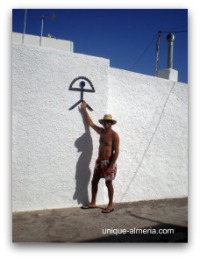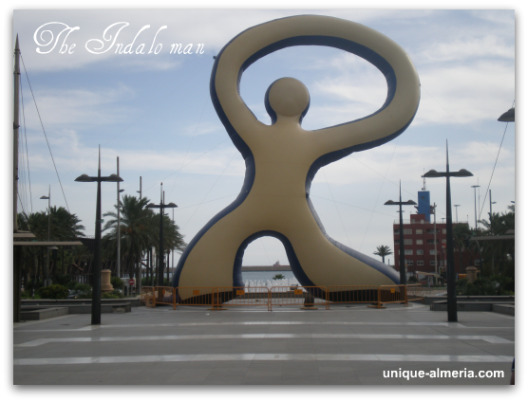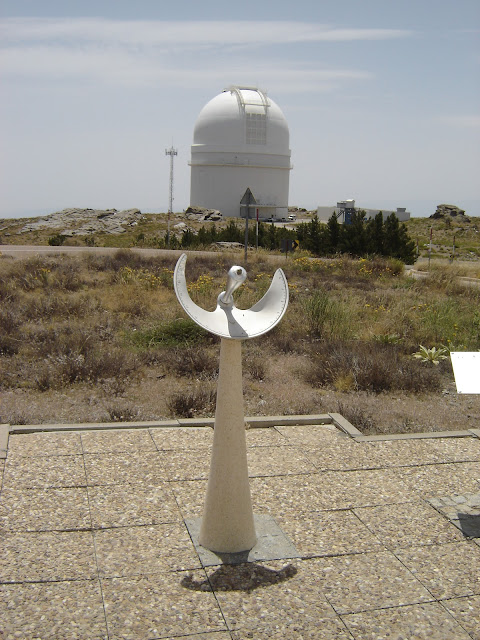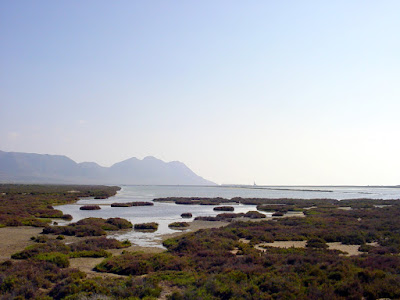The Indalo

 Go into any gift or souvenir shop in the city of Almería or the tourist resorts of Roquetas de Mar and Mojácar and you will find key rings, thimbles, teaspoons and even jewellery - all bearing the Indalo symbol. Furthermore, on the road to Almería airport a giant statue of the Indalo stands prominently on a roundabout towering over the 'Welcome to Almería' sign.
Go into any gift or souvenir shop in the city of Almería or the tourist resorts of Roquetas de Mar and Mojácar and you will find key rings, thimbles, teaspoons and even jewellery - all bearing the Indalo symbol. Furthermore, on the road to Almería airport a giant statue of the Indalo stands prominently on a roundabout towering over the 'Welcome to Almería' sign.So what is so special about this stick figure man that the Almeriense, the people of Almería, call the Indalo? Well, in 1868, cave paintings were discovered in a cave in the north of the province of Almería. These cave paintings were about 6,000 years old and one of them, a man with his arms held out to his sides and holding a rainbow above his head, has come to be the symbol of Almería.The Indalo allegedly brings good luck, health and love to those who own one. It is customary in this region of Spain to paint the Indalo symbol on the front of houses and businesses to protect them from evil. The interesting thing to note, however, is that this practice of warding off evil spirits by having the Indalo symbol above the door has been going on for centuries, so the locals must have known about the symbol before the cave discovery.
In olden days fishermen used to pin the symbol on their doors before going out to sea as a protection against storms and as a guarantee of obtaining a good catch. Perhaps they still do!
The cave in question, la Cueva de los Letreros, was declared a National Monument in 1924. It is one of a number of caves situated in the Sierra de María in the north of the province of Almería.
Los Letreros lies between the towns of Vélez Blanco and Vélez Rubio.
Vélez Blanco is particularly worth a visit. It is a typical pueblo blanco with its whitewashed houses nestling at the foot of a rocky outcrop upon which stands a majestic castle.

Copyright of this text and more info at: Cave Painting : The Indalo Man, discovered in Almeria, Spain & Good Luck charm.. http://www.unique-almeria.com/cave-painting.html#ixzz1QNsXxKpw





















.jpg)
.jpg)







.jpg)














